
37 National Liquor Per Country That You Must Try!


We recommend the best products that we believe will offer value for our readers —learn more about our review process. If you buy through links on our site, we may earn a small commission at no extra cost to you.
When traveling overseas, there's nothing more exciting than discovering a liquid delicacy indigenous to its country. Just as there’s tequila in Mexico, Scotch in Scotland, and bourbon in the United States of America, there is a national liquor per country.
Visiting these countries and drinking these liquors on their home soil makes for a much more authentic experience. But if you can’t travel, luckily, you can still enjoy the more accessible liquors in your home country.
If you're looking for a change from the usual tourist attractions or want to expand your palate with new liquors, try looking at some of the drinks that have become national icons in their countries!
|
Best Rich Flavors: Bourbon - United States of America Best Styles: Tequila - Mexico Best for Tropical Drinks: Rum - Jamaica Best Vegetal: Cachaça - Brazil Best Grape Flavor: Pisco - Peru and Chile Best Licorice Flavor: Aguardiente - Colombia Best Specific Ingredient: Singani - Bolivia Best Unaged: Clairin - Haiti Best Low-Alcohol: Soju - South Korea Best for Baijiu Beginners: Kaoliang - Taiwan Best Acquired Taste: Maotai - China Best Herbal: Mekhong - Thailand Best Celebratory: Lambanog - Philippines Most Interesting: Lao-Lao - Laos Best Bottle Designs: Sombai - Cambodia Best Palate Cleanser: Arak - Lebanon Best Versatile: Vodka - Russia and Poland Best Juniper Flavor: Gin - England Best Smoky: Scotch Whisky - Scotland Most Diverse: Rakija/Rakia - Croatia, Bulgaria, Montenegro, Bosnia and Herzegovina, Macedonia Best Color: Campari - Italy Best Digestif: Becherovka - Czech Republic Best Savory: Brennivín - Iceland Best Aperitif: Ouzo - Greece Best Bitter: Unicum - Hungary Best for Summer: Pastis - France Best Transformative: Raki - Turkey, Albania Best Spice Flavors: Aquavit - Norway, Sweden, and Denmark Best Malt Flavor: Jenever - Belgium and Netherlands Best Medicinal: Zivania - Cyprus Best Natural: Horilka - Ukraine Best for Social Gatherings: Ţuică - Romania Best Kosher: Slivovitz - Serbia Best Pure Taste: Koskenkorva Viina - Finland Best Fig Flavor: Mahia - Morocco Best Small-Batch: Akpeteshie - Ghana Best Homemade: Waragi - Uganda |

Made with 51% corn mash and aged in a new oak barrel, bourbon is known for its smoky, deep, and sweet flavor profile. Some bourbons are better in cocktails, like in Boulevardier or an Old-Fashioned, while others are better served as is or with a few drops of water.
Over the years, bourbon has become a big industry in the United States. In fact, it accounts for roughly more than half of all distilled beverage sales in the country. It's so popular that the U.S. Senate proclaimed September the National Bourbon Heritage Month.
ABV: 40%-80% | Tasting Notes: Vanilla, wood, fruits, smoke, chocolate, caramel, spices | Food Pairings: Meat, chocolate, cheese, salmon, desserts
Related: The Best Bourbons For Beginners

Tequila is a Mexican spirit first distilled in the 16th century near Tequila, Jalisco. Most Mexicans drink their 100% agave tequila straight from shot glasses and then take little sips, while other people opt to add some lime and salt to their tequila shots.
In 1758, the Cuervo family started making tequila, and the Sauza family did the same in 1873. Cuervo and Sauza remain two of the most well-known tequila brands. Now, tequila is one of the top three-selling liquors in the world, with over 1,500 brands and many devoted fans.
ABV: 40%-75% | Tasting Notes: Agave, fruity, earthy, mineral, sweet, woody | Food Pairing: Tacos, fish, grilled meats, chocolate, vegetables
Related: Types Of Tequila

Jamaican rum is famous for its robust aroma and flavor, highlighting fruits such as pineapple and overripe banana. The "funk" or "hogo" in Jamaican rums comes from fermenting ingredients such as muck, dunder, and cane acid, which is uncommon in other rum-producing countries.
To create rum, you need sugar, which Christopher Columbus brought to Jamaica in 1494 when he arrived from the Canary Islands. When the British took over the rule of Jamaica in 1655, they brought with them from Barbados a practical knowledge of rum-making and distillation.
ABV: 40% - 80% | Tasting Notes: Tropical fruits, caramel, wood, vanilla, sugarcane molasses, spices | Food Pairing: Dried fruits, nuts, chocolate, cheese, ceviche, meat
Related: Is Spiced Rum Keto?

If you want to enjoy a cocktail on Brazil's beaches, make one with Cachaça. It’s also known as Pinga, Caninha, Aguardente, etc., and is made from fermented sugarcane juice and then distilled. For Brazilians, Cachaça represents enjoyment, freedom, and perpetual summer.
Many American and European establishments now sell a bottle of Cachaça to make a Caipirinha or a Bloody Carioca - a South American spin on the Bloody Mary. In 2014, Cachaça earned worldwide recognition when Brazil hosted the FIFA World Cup.
ABV: 38-54% |Tasting Notes: Grassy, sweet, baking spices, vegetal, fruits | Food Pairing:
Feijoada, salad, bread, chicken, cheese
Related: What Is Cachaça?

Pisco is made from muscat grapes produced in the sunbaked river valleys of El Norte Chico. This delicious, aromatic brandy is widely used in Peru and Chile, most notably in the wonderful concoction known as a Pisco sour - a tart, herbaceous, frothy drink.
Pisco-based cocktails that are popular among late-night revelers include Piscola, simply Pisco mixed with soda. A Chilean remedy for the common cold is tea with a shot of pisco, and it may just do the trick to cure a headache and stuffy nose.
ABV: 38-48% |Tasting Notes: Semi-sweet or dry, grape, herbal, earthy | Food Pairing: Picarones, seafood, meat dishes with rice, eggs
Related: Pisco Sour and Other Pisco Cocktails

Once you land in Colombia, any Colombian will first invite you out for a shot of Guaro, a popular nickname for Aguardiente. Aguardiente, translated as "firewater," is made from sugarcane and anise and is culturally associated with holidays and celebrations.
Given its crisp profile and clean finish, it can be enjoyed neat, chilled with ice, or as a shot. While it can be made in original Aguardiente cocktails, It is frequently substituted in more traditional drinks to add a unique twist, such as an aguardiente sour or an aguardiente mojito.
ABV: 24%-29% |Tasting Notes: Anise, black licorice, smooth, vanilla, cinnamon | Food Pairing: Hard cheese, grilled meat, tropical fruits, bread
Singani is a distilled spirit made only from the magnificent grape Moscatel de Alejandría, grown at extremely high altitudes. The grapes exhibit a delightful floral and sweet aspect, similar to dessert wine.
Bolivia’s national drink was first concocted over 400 years ago, but the flavors' secret has been closely guarded for centuries.
Only recently, Singani has made it to the Western market, thanks to a bottle made by film director Steven Soderbergh. If you want something unique, try a Singani Sour or substitute vodka for it in any of your favorite vodka cocktails.
ABV: 40% |Tasting Notes: Dried fruit, grape, peach, herbal, floral, acid | Food Pairings: Fatty meat, oysters, toast, coconut soup, pizza
Related: The Best Brandy Brands

Clairin is a traditional national drink made using local methods and ingredients and has a long history in Haitian culture. It has gained popularity recently outside of Haiti, particularly in the cocktail scene, as bartenders are beginning to appreciate its unique flavor profile.
Unlike most commercially-produced rums, Clairin is made using wild yeasts and natural fermentation processes, giving it a distinctive and complex flavor profile. It is typically made from sugarcane juice rather than molasses, the common ingredient for rum production.
ABV: 43%-57% | Tasting Notes: Earthy, grassy, mineral, herbal, umami, salty, fruity | Food Pairing: Spicy Caribbean cuisine, grilled meats, tropical fruits, dark chocolate

Soju is a clear, low-alcohol distilled alcoholic beverage made from rice and grain. It is South Korea's most popular alcoholic drink and has been the best-selling liquor in the world for years. It’s not a surprise, given South Koreans consume 13.7 shots of liquor weekly.
Koreans love soju due to its taste, price, and ability to help people relax and socialize. It’s often described as sweet, smooth, and slightly fruity. With the prominence of K-dramas and K-pop nowadays, soju is also becoming well-known in many countries.
Some people may confuse soju with Japanese sake, a rice wine, but you should know that the latter is not distilled.
ABV: 13-25% | Tasting Notes: Light, slightly sweet, smooth, herbal, fruity | Food Pairing: Samgyupsal, Korean fried chicken, grilled shellfish, Ojingeochae, Jokbal, Tteokbokki
Related: How Is Soju Made?

Kaoliang is a type of baijiu made from sorghum with a light aroma and transparent appearance. Because it has such a high alcohol level, some older Taiwanese use it as a manliness test to determine who can drink the most.
The most well-known Taiwanese kaoliang is made on the outlying island of Kinmen, administered by Taiwan. It’s recommended to drink it straight to get the most authentic taste. As it moves from the tip of the tongue to the back of the throat, it has a smooth and delicate flavor.
ABV: 38%-63% | Tasting Notes: Barley, dried fruit, spicy, citrus | Food Pairing: Shellfish, fried vegetables, sushi, ramen
Related: What Is Baijiu?

Maotai is another type of baijiu with a rich history going back over 2,000 years and is named after the town of Maotai in the Guizhou province where it is produced. This drink remains important as it’s served for foreign dignitaries and is gifted as a sign of respect and friendship.
It is typically made from fermented sorghum and other grains, distilled in traditional clay pots and aged for several years. The final product is a clear and colorless alcoholic beverage renowned for its distinctive aroma, often described as "sauce fragrance."
ABV: 38%, 43%, 53% | Tasting Notes: Soy sauce, nutty, floral, fruity, savory | Food Pairing: Fatty meats, sashimi, crab, braised chicken, apricot chocolate cake
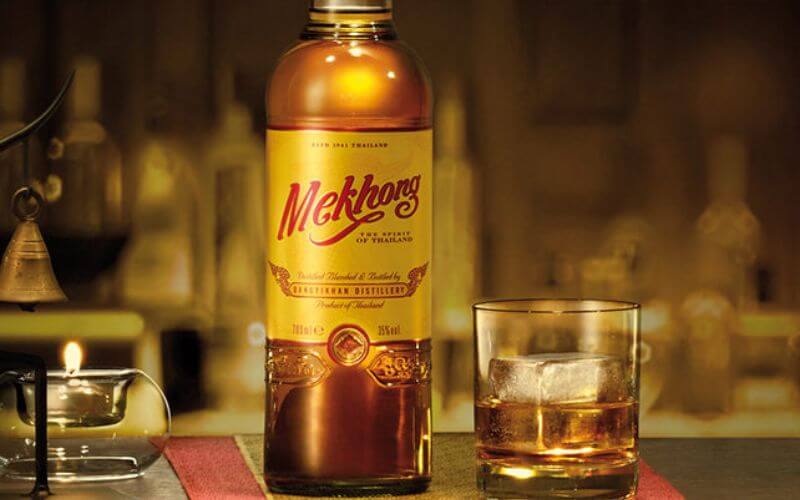
Mekhong whiskey has been in Thailand for more than 80 years. Named after the mighty Mekhong River that runs through Thailand, Mekhong has a wonderfully smooth aroma and inviting taste that instantly brings you to Southeast Asia's tropics.
Mekhong is made from 95% molasses or sugar cane and 5% rice. It is a versatile liquor that can be enjoyed straight or in cocktails like Thai Sabai. Its well-balanced and smooth flavor and reddish copper color make it a unique ingredient to experiment with wonderful concoctions.
ABV: 35% |Tasting Notes: Ginger, orange, herbs, vanilla, toffee, chili | Food Pairings: Curry, vegetable salad, grilled food, fried food, stir-fried noodles

Lambanog is made from fermented coconut sap called tuba, then distilled once or twice to reach over 160 proof. In Quezon, drinking Lambanog is a group activity. Men relax in a circle and take turns drinking from a cup placed in the center of the group.
Normally, there is also a person who sings and plays the guitar, so the music and songs become more interesting as the drinking continues. To appeal to young people and broaden its market, it's now sold in various flavors such as strawberry, grapes, green apple, and orange.
ABV: 40%-83% |Tasting Notes: Slightly sweet, clean, light, dried fruit | Food Pairing: Lechon, chicken adobo, ceviche, Sisig, grilled pork belly, Chicharon
Related: Calamansi Cocktail Recipes

Lao-Lao is a traditional rice whisky produced in Laos and utilizes glutinous rice as its main ingredient. After cooking the rice and mixing it with yeast, it undergoes fermentation before being distilled in bamboo or metal vessels.
Lao-Lao rice whisky is mostly clear in color and has a very mild flavor. It is customarily consumed in one shot, but it may be too strong for the novice. Some variations of Lao-Lao are infused with whole snakes or scorpions, which are believed to have healing properties.
ABV: 40-63% |Tasting Notes: Sweet, rice, yeast | Food Pairing: Grilled poultry, sticky rice, green mango salad, rice noodle soup
Related: Most Exotic Alcohols In The World

Sombai is a manufacturer of rice spirits that are must-have souvenirs for visitors to Cambodia. “Sombai” translates as "some rice, please" in Khmer and symbolizes Siem Reap. Sombai rice wines can be served neat or as cocktails like The Asana Sling, Sombai Blue, and Sombai Fizz.
Sombai offers a delightful drinking experience and reflects Cambodian culture and the abundance of tropical fruits and spices in the region. The spirits are often presented in beautifully hand-painted bottles, making them visually appealing.
ABV: 18-25% |Tasting Notes: Tropical fruits, ginger, herbs, anise, chili | Food Pairing: Sticky rice dishes, noodle soups, fermented sauces/condiments, stir-fried dishes
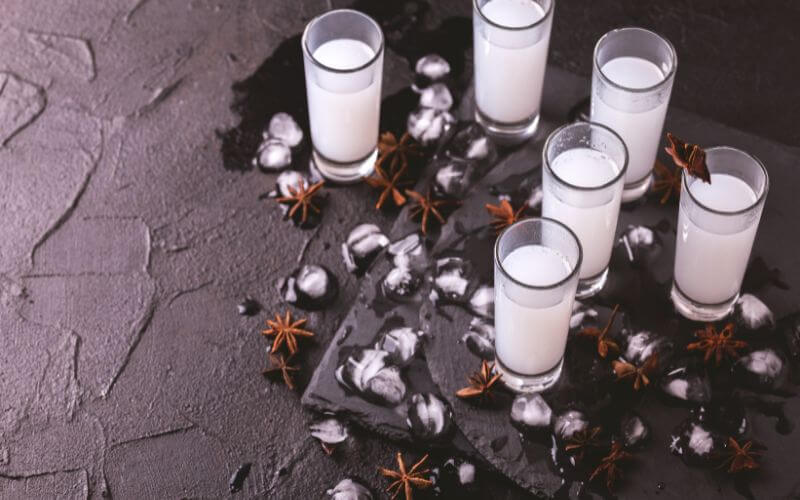
Arak is made from fermented grape juice that is distilled and flavored with aniseed. It's typically aged in clay jars or oak barrels, giving it a distinctive flavor and aroma. Typically, it has a strong anise flavor that is sweet and savory, with hints of licorice and fennel.
Arak is usually served in a special glass, along with water and ice, which causes the liquor to turn cloudy, a process known as "louche." Arak is also traditionally served with mezze - a selection of foods on small plates typically served as a prelude to a meal.
ABV: 40–63% | Tasting Notes: Anise-forward, licorice, herbal, citrus | Food Pairing: Mezze platters, grilled meats, Middle Eastern cuisine

Vodka is traditionally manufactured by distilling fermented cereal grains, corn, or potatoes, though some modern brands utilize fruits or sugar. In Russian culture, vodka is a staple drink inextricably linked to social life, as people drink it and bond over it on any occasion.
If you have a cold or any other minor ailment, do not be surprised if someone prescribes a vodka shot. Russians believe in the drink's therapeutic and preventative effects. There are also a lot of mixers that go with it because its range of flavors can go with many ingredients.
ABV: 40%-95% | Tasting Notes: Citrus, pepper, bread, fruit, grain, creamy | Food Pairing: Caviar, Russian salad, smoked fish, smoked meats, steak, creamy or salty cheeses, pickles
Related: How To Make Tea-Infused Vodka
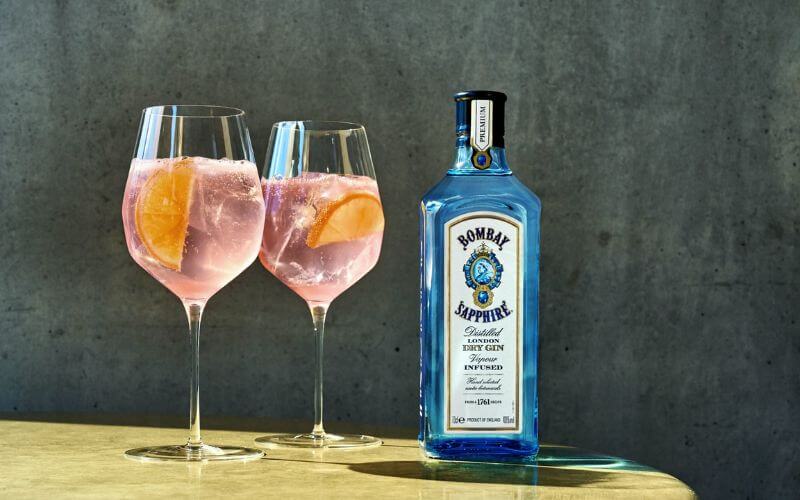
Gin derives its flavor from juniper berries and has long been associated with British culture. Although the Victorian era's early 'gin fever' received a bad reputation and was called 'mother's ruin,' gin eventually became an effortlessly elegant, sophisticated alcoholic drink in pop culture.
James Bond is famous for his vodka martinis, but in Fleming's books, he also drinks a Vesper Martini. Gin can also be seen in multiple episodes of Downton Abbey, contributing to its widespread popularity, and the late Her Majesty Queen Elizabeth II was a big fan of gin.
ABV: 37.5%-55% | Tasting Notes: Sweet, spicy, slightly bitter, juniper, pine | Food Pairings: Charcuterie, smoked salmon, curry, spicy foods, berries
Related: How Is Gin Made?

Scotland has traditionally proven its strength and courage by fighting valiantly for its independence. So it’s no wonder that Scotch is a robust, strong, and fiery drink, but it can also be smooth and sweet - an alcoholic beverage of depth and contrasts, much like Scotland!
It is typically produced from barley and fresh, clear water; both are abundant in Scotland. No matter the occasion or minor ailment, the Scots have historically relied on a shot of Scotch whisky. But it’s still important to consider its long-term effects on health.
ABV: 40%-75 % | Tasting Notes: Malty, sweet, peppery, fruity, vanilla, creamy | Food Pairing: Pork ribs, cheese, pub mix, fruits, chocolate
Related: The Best Scotch Cocktails
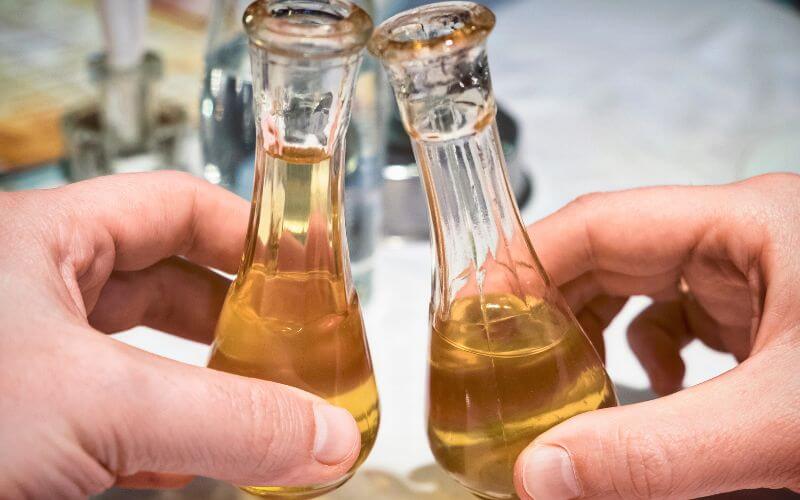
Rakija or rakia is an umbrella term for fruit brandy that’s the national alcoholic beverage of many Balkan countries. It is commonly made with plums and grapes, while other varieties are derived from apricot, berries, cherries, pear, etc., which have different names.
Many tourists are surprised by the prevalence of ceremonies surrounding the consumption of rakija. Not making eye contact during toasting is considered a huge show of disrespect, and it is taken very seriously.
Unlike tequila, you should never take a little rakija all at once. It's best not to rush through the drinking of this strong alcohol; instead, enjoy its rich flavor in a few sips.
ABV: 40%-80% |Tasting Notes: Strong, medicinal, sweet, fruity | Food Pairing: Shopska salad, red meat dishes, green food, spicy dishes, rich desserts, cheeses.

The bittersweet flavor of the aperitif Campari is achieved by infusing alcohol and water with bitter herbs, fragrant plants, and fruits. According to Eligio Bossetti, a historian at Villa Campari, only three people know the recipe, which is said to contain up to 80 ingredients.
All Campari classics, the Americano, the Negroni, the Spritz, and the Campari soda, may be made up on the go and served in any old glass. Campari also goes well with white wine, sparkling wine, and white spirits, thanks to its flavor and red color that’s as vibrant as brandy fortified Spanish wine.
ABV: 21%-28% |Tasting Notes: Orange peel, cherry, clove, and cinnamon | Food Pairing: Pizza, olives, nuts, fatty meats, bold cheeses
Related: What Is An Aperitif?

Czechs are known for their love of beer and Becherovka, an herbal bitter with a distinct flavor based on a secret recipe of herbs and spices. It was originally consumed during the winter months or as a digestive aid for upset stomachs.
The liqueur has grown famous among the Czech youth and is available in Prague's most trendy bars and clubs. Locals advise first-time Becherovka drinkers to mix it with juice or soda. You can also try a BeTon, made with Becherovka and tonic served with a wedge of lemon or orange.
ABV: 38% | Tasting Notes: Menthol, ginger, cinnamon, licorice, dark honey, citrus | Food Pairing: Salad, cheese, lamb, chicken, beef, beans
Related: What Are Digestif Drinks?

Brennivín is also known as Svarti daui, which translates to "Black Death." It’s generally described as strong and can be unpleasant. Still, Icelanders consume it to honor their tradition, and they either drink it dry or frozen to lessen the stinging taste.
It’s made from fermented potato mash and infused with caraway seeds and additional herbs, resulting in a sweet and savory flavor profile. You can also substitute gin, white rum, and rye whiskey with it.
ABV: 40% | Tasting Notes: Licorice, anise, caraway, cumin, rye bread | Food Pairing: Pork, fermented shark meat, lamb, caviar
Related: The Best High Rye Bourbons

Ouzo is an anise-flavored liquor made of grape must. If you are dining in Greece, do not be surprised if your waiter brings you a glass of Ouzo before your entrée arrives. It’s meant to be drunk before meals, as Greeks believe it cleanses the palate and relaxes the mind.
It takes some skill to enjoy Ouzo since it contains 40% alcohol by volume and is not meant to be chugged. It is always served mixed with water in a glass, which turns it milky-white and aids in releasing its perfumes.
ABV: 37-50% |Tasting Notes: Aromatic, sweet, clean fennel, caraway, star anise | Food Pairing: Mezze, squid, clams, sardines, olives, eggplant

Unicum follows a top-secret formula made by the Budapest-based drinks company Zwack. The recipe combines over 40 herbs and spices before being aged in oak casks for over six months. It is drunk throughout the country as a digestif and apéritif.
The herb mixture imparts a bitter flavor, so the drink is an acquired taste. Once you get acclimatedto it, you may find that it becomes quite addictive!
While many people believe Unicum has medicinal properties, as evidenced by the medical-style cross on its logo, it is most commonly consumed as a shot in a liqueur glass at social gatherings, with a meal.
ABV: 40% | Tasting Notes: Bitter, spicy, herbal, silky honey | Food Pairing: Meat, smoked salmon, salty cheeses

During summer in France, you may see highball glasses with cloudy pale yellow booze. This is Pastis, a boozy, anise-flavored spirit and aperitif made primarily in southern France. A few pastis-based cocktails exist, but they are best enjoyed alone or with a splash of water.
Among the most popular creations are the Rourou (with strawberry syrup), tomato (with grenadine), and Perroquet (with green mint syrup). It is commonly consumed all day while playing relaxing games of pétanque in the sun, but be warned: this stuff packs a serious punch.
ABV: 40-45% |Tasting Notes: Anise, black licorice, dried mint leaf, camomile | Food Pairing: Olive-based pastes, bruschettini, nuts, chips

Raki is considered the national spirit of Albania and Turkey, but there are distinctions between the two versions. Turkish Raki is usually produced from grapes or raisins, while Albanian Raki is prepared from distilled fruits, including plums, grapes, and other fruits.
Raki is typically served in a special glass with ice and water, which causes the clear spirit to turn a milky white color. This is why raki is often called "Aslan Sütü" in Turkish, which translates to "Lion's Milk" in English.
This national drink is often compared to Italian grappa, which is made from pomace and grape residue. Moreover, these distilled grape spirits can also be mixed with orange juice or soda to balance the flavors and make it easier to drink.
ABV: 40–50% | Tasting Notes: Anise, licorice, aromatic | Food Pairing: Grilled meat, bread, baklava, cheese, seafood

Aquavit (akvavit, akevitt, or snapps) is a Scandinavian spirit derived from potatoes or grains, complemented with caraway, citrus, and spices. It is traditionally drunk straight, either chilled or at room temperature, during holidays such as Easter and Christmas.
In Sweden and Denmark, unaged aquavit is typically served in shot glasses or stemmed liquor glasses. Meanwhile, in Norway, aged aquavit is frequently served at room temperature so you can fully appreciate the flavor nuances imparted by the barrels.
ABV: 40% | Tasting Notes: Caraway, rye bread, herbaceous, dill, fennel | Food Pairing: Nordic cuisine, grilled foods, seafood, vegetables, beef
Related: The Best Shot Glasses

Jenever, AKA Dutch gin or genever, is made from a base of grain mash, then distilled with botanicals like juniper berries. Jenever can be either young or "jonge," which is clear and milder in flavor or aged or "oude," which is amber-colored and has a more complex flavor.
In Belgium, Jenever is traditionally served in tulip-shaped glasses, which are held by the stem and then tilted forward to drink. In the Netherlands, Jenever is often enjoyed as a "kopstoot," which means "headbutt" in Dutch.
ABV: 35%-50% |Tasting Notes: Botanical, malty, juniper, anise, coriander, smooth | Food Pairing: Seafood, pork, desserts

Bottles of Zivania - Image by Cyprus Island
Zivania is a brandy made in Cyprus from grape pomace (wine or grape residue retained from winemaking) and dry wines sourced locally. Aside from drinking, Cypriots also use it to treat wounds, colds, and toothaches, massage body parts, and keep warm during winter.
Zivania’s flavor and aroma develop when it ages, making it a special treat for first-time drinkers. Visitors to Cyprus are traditionally greeted with ice-cold Zivania, dried nuts, Turkish delight, and other local appetizers.
ABV: 45% | Tasting Notes: Cinnamon, figs, nutmeg, raisins, citrus | Food Pairing: Soutzouki, lountza, tsamarella, nuts, cheese, Meze
Related: The Best Wine Presses
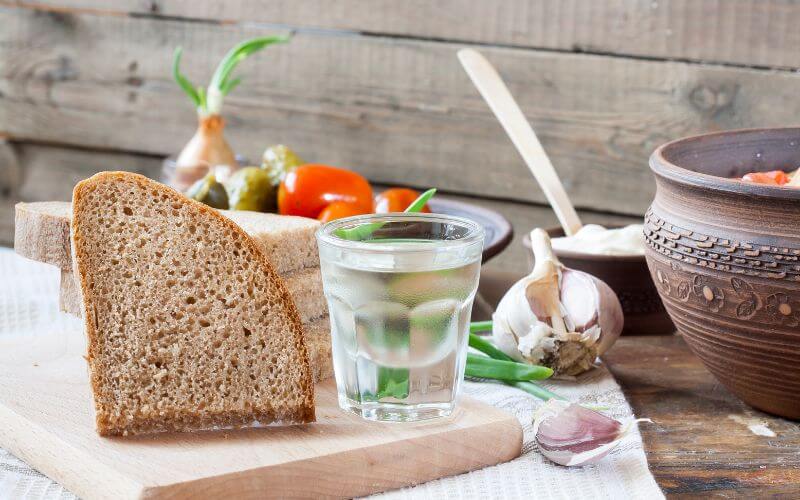
Horilka comes from the Ukrainian word "горіти" (hority), which means "to burn,” a reference to the burning of liquor to determine its alcohol content.
Its earliest known ancestor was created by a Persian doctor in the 10th century. In the 15th and 16th centuries, Horilka made its way to Ukraine and became a staple of Cossack culture.
Today’s version is produced from grains such as wheat, barley, and rye which are carefully selected and milled, mashed, and fermented to perfection. Some distillers innovate with other ingredients, such as honey, berries, or herbs, to give them a complex flavor.
ABV: 40% | Tasting Notes: Clean, neutral, grain-forward, subtle sweetness | Food Pairing: Traditional Ukrainian dishes, pickled vegetables, hearty meat dishes

The ritual of drinking Ţuică, a plum liquor, before a meal is ingrained in the country’s culture and considered an essential part of the dining experience. It’s common to start the day with a shot of Ţuică, accompanied by a classic breakfast spread.
Romanians have compared it to moonshine, as it is not subject to the same regulations as commercially produced alcohol. Even now, producers are only taxed if they choose to report their profits.
ABV: 25%-65% | Tasting Notes: Fruity, strong, floral, fresh, prunes, caramelized plums | Food Pairing: Cured meats, polenta, cabbage rolls, sweet bread, lamb haggis

Slivovitz, also known as Šljivovica, is a type of Rakija made from fermented and distilled plums and has a long history in Serbia and other countries in the Balkan region. It’s typically colorless, although it can have a slightly yellow or amber tint from the aging process.
It’s also kosher since it’s free from grains, making it popular among the Jewish community, and they often drink it during Passover. Slivovitz can also be seen during other special occasions, such as weddings, where it is typically served in small shot glasses.
ABV: 40%-70% | Tasting Notes: Plum, jam, almond, oak, stone fruits | Food Pairing: Dried fruits, nuts, vegetables, fish

Koskenkorva Viina is a type of Finnish vodka made from locally grown barley and pure spring water from the village of Koskenkorva, located in southern Ostrobothnia, Finland. It is often referred to simply as "Koskenkorva."
One of the unique things about Koskenkorva Viina is that it is made using a continuous distillation process, allowing a high level of purity and consistency in the final product. The production process also emphasizes sustainable practices.
ABV: 38% | Tasting Notes: Clean, smooth, grainy, neutral | Food Pairing: Pickled herring, Finnish rye bread, smoked salmon, herring

Mahia was first crafted by the Moroccan Jewish community prior to their relocation during the latter half of the 1900s. This traditional Moroccan spirit is made from figs and aniseed, contributing to its flavorful and complex characteristics.
Its taste resembles other anise-flavored spirits, such as ouzo and absinthe, but with a Moroccan character. Moreover, it is served neat or over ice and is often accompanied by dried fruits and nuts. It is also sometimes used in cooking and mixology.
ABV: 40% | Tasting Notes: Floral, fruity, fig, honey | Food Pairing: Moroccan cuisine, grilled meats, pastries, dates, almonds, and walnuts
Related: The Best Absinthes

Man distilling Akpeteshie - Image by DW Food
Akpeteshie, a traditional spirit made from fermented palm wine or sugarcane juice, is a widely consumed drink, particularly in the rural areas of Ghana, and is often referred to as "Ghanaian gin" or "firewater" due to its high alcohol content.
During British colonization, the production and consumption of Akpeteshie were outlawed. And consequently, due to its history of being produced secretly and in small batches, it has gained a reputation as the "Ghanaian Moonshine."
It wasn't until 5 years after Ghana gained independence in 1957 that Akpeteshie was finally legalized. While it isn’t professionally advertised and is only made by small-scale producers, people still love it!
ABV: 30%-60% | Tasting Notes: Potent, citrus, spices, bitter | Food Pairing: Fufu, Waakye, Tuo Zaafi, tilapia, prawns, curry
Related: How To Make Moonshine

Holding a bottle of Waragi - Image by You Well
Historically, Waragi was known as "war gin" by the British settlers in Uganda because it was frequently consumed during wartime celebrations. Waragi is the localized form of a name that developed over time.
This locally brewed gin is crafted from fermented bananas and then distilled. However, some variations may also include other fruits like pineapples or millet. Like all liquors, Waragi is contained in glass bottles but is also available in small plastic bags.
ABV: 40% | Tasting Notes: Juniper, herbs, citrus, fruity, slightly sweet | Food Pairing: Muchomo, stewed meats, beans, curry
If you’re a liquor enthusiast, we recommend expanding your horizons by looking at different countries’ national drinks. You’ll find that such drinks reflect different and interesting cultures and people. Who knows? Maybe you’ll find a new favorite liquor in a different country.
Which national liquors would you most like to try? We’d be delighted to hear your thoughts in the comments below!
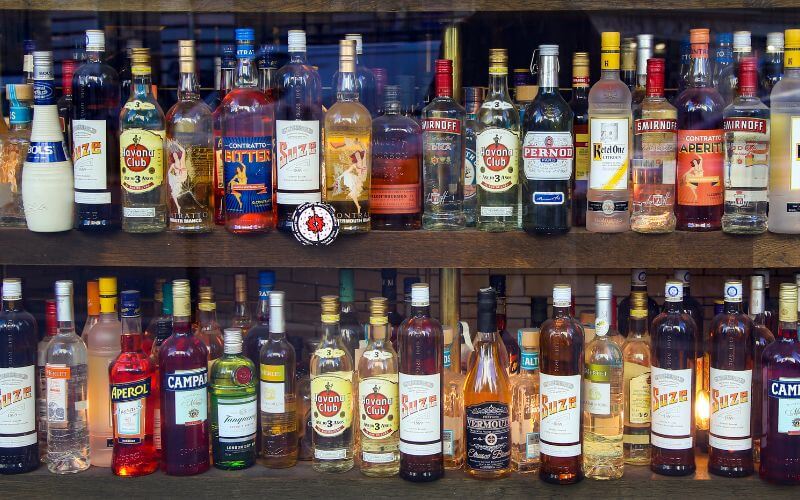
Trying out new alcohol can be intimidating at first, and adjusting to the taste may take a while. So to help you choose which one to try first, consider the following factors.
Understanding the ingredients and the process involved in producing a national drink can provide valuable insights into its taste, quality, and uniqueness. Each country's liquor brings a unique blend of grains, fruits, or other botanicals, which are carefully selected and combined.
The process, often passed down through generations, involves fermenting, distilling, aging, and sometimes infusing the spirit with unique flavors. By considering these aspects, you can appreciate the cultural and historical significance behind the liquor and make an informed choice.
Countries produce national drinks with specific tastes and aromas shaped by various factors like the ingredients used, the aging process employed, and even regional variations.
These liquors present a diverse range of taste experiences, incorporating elements of sweetness, bitterness, acidity, and a plethora of aromatic compounds.
By evaluating the flavor profile of liquor, you can find out whether it matches your personal preferences and if it complements the occasion or cuisine you intend to enjoy it with.
It’s also important to consider a liquor’s versatility in cocktails. Different liquors can be utilized in a multitude of recipes, ranging from beloved classic cocktails to innovative modern creations, due to how well they can be mixed with other ingredients.
Furthermore, some alcoholic beverages have variations, which contribute to their versatility, such as tequila’s Blanco, Reposado, Añejo, extra añejo, Cristalino, and Joven varieties. They have more distinctions that allow you to indulge and experiment with different cocktails.
People have varying alcohol tolerances, so it’s beneficial to know a liquor's alcohol by volume or proof before buying it. Some varieties offer a wide range of ABV, providing more options to customers.
Many liquors have a standard ABV of 40%, which are great for sipping or making cocktails. But, if you choose the higher-proof ones, make sure you consume them responsibly.
It’s great if liquor, like bourbon, can be easily bought in stores. But for uncommon liquors, getting your hands on them may be more difficult. Distribution, import/export laws, production volumes, seasonality, and popularity can all affect a liquor's availability in a given country.
In some cases, import/export laws may make obtaining certain liquors in specific regions difficult or costly. Other liquors are so rare or made in small quantities that you can only access them if you’re in the country where they’re from.
Different countries may have different price points for their liquors, so it’s best to have a budget to help you make informed purchasing decisions.
Additionally, considering the price in relation to other factors, such as flavor profile and uniqueness, can help you determine which liquors are worth your money.

In 2019, China's alcohol production reached an impressive volume of over 55 million metric tons. It has a long tradition of alcohol production, with various types of liquors being produced across different regions of the country.
China predominantly relies on sorghum as the main grain for its alcohol production, although they also use other grains such as wheat and rice.
The most consumed liquor in the world is baijiu, a traditional Chinese spirit. Remarkably, the National Bureau of Statistics of China reported a staggering production of over 6.7 billion liters of baijiu in 2022.
Moreover, there has been a noticeable surge in its popularity within Europe in recent times, prompting China to ramp up its exports of this beloved spirit to various nations across the region.
Since they are only a few letters off, it’s no wonder why people mistake them to be the same thing. However, they do have several distinctions. In terms of ingredients, Raki is notably made with grapes, plums, and aniseed, similar to Ouzo, Arak, and Pastis.
Conversely, Rakija does not have anise but can be made from various fruits like plums, apricot, quince, pears, apples, raspberries, and more. Different ingredients have different names; for instance, plum Rakija is called Slivovitz.
Regarding consumption, Raki is to be mixed with water or ice, which turns it white. Rakija is consumed straight and does not turn white. Although, it may have a tint due to herbs added after distillation.
We believe that our readers should have access to unbiased, well-informed reviews when deciding which products to buy, and we work hard to provide that type of content. Our editorial team is experienced and passionate about mixology and bar equipment. In addition, we often consult with industry professionals when gathering information, which gives us an insider's perspective on the products we're reviewing.
Read Next: The Best Grain Alcohol Brands

